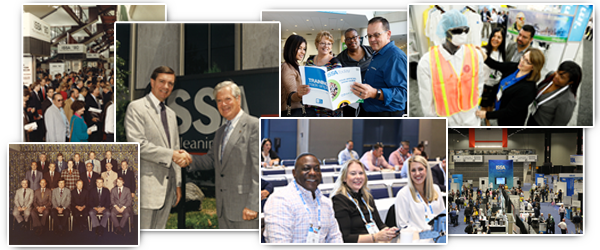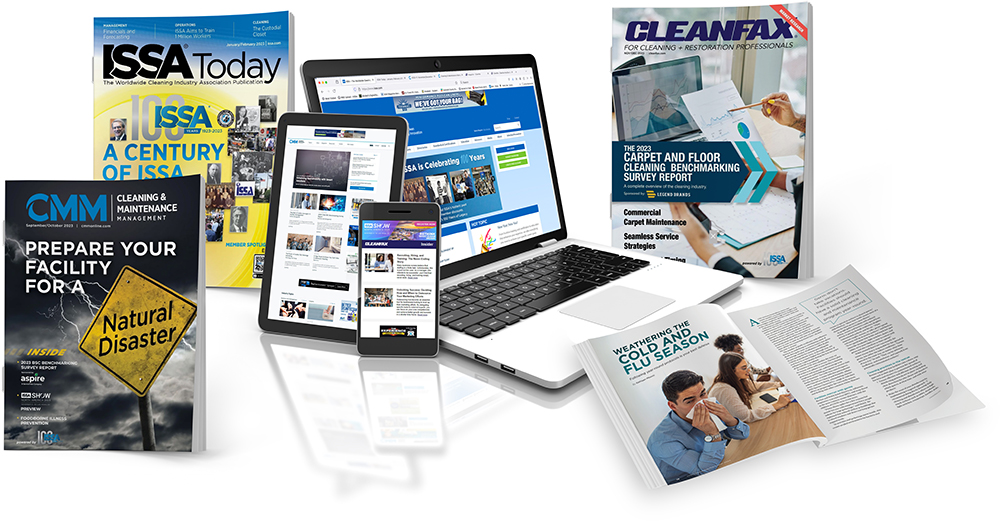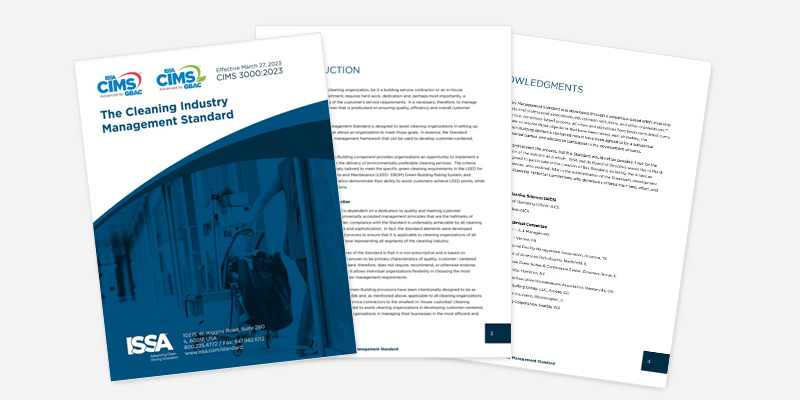Avoid the Blindside
It’s a Monday morning, and in sorting your mail, you see an envelope from one of your customers—one that has been your customer for a long time. As you open the letter, you are perplexed, wondering why this is so formal. “What’s going on?” is your thought as to why it’s not just a phone call or an e-mail. When you open the letter, you see it is a very formal letter that tells you that your services have been terminated and states your last day of service.
You are flabbergasted. What just happened? There seemed to be no warning signs.
Troubled, you call your customer immediately. In your conversation, you ask all the questions, trying to figure out what happened and how this letter can be rescinded. You try damage control. You try service recovery. Ultimately you come to the realization that this termination is in place and is final.
But why? What happened?
You begin asking your managers for insight. Feeling blindsided, you start the process of uncovering what the causes might be. You must regain your composure and begin the task of discovering why?
Customer erosion
Notice these important customer observations found in Service Management: Operations, Strategy, and Information Technology: Fitzsimmons’ seventh edition: “Average businesses only hear 4% of the customers who are dissatisfied, meaning 96% of the customers do not bother to complain, and 25% of customers have serious problems. Further, 60% of the complainers would stay as customers if their problem were resolved, and 95% say they would stay if the problem were resolved quickly. Importantly, a dissatisfied customer will tell from 10 to 20 people about their problem. A customer who has a complaint resolved will tell approximately five people about the situation.”1
If management had been informed in time, they might have successfully made the adjustments or corrected the customers’ complaints quickly. First thoughts require a quick analysis by senior management to examine what the company standards and objectives are. Are they being met? Is a process in place to analyze a major complaint or difficult customer situations and to provide answers?
Paramount to the analysis is what changes must be implemented, such as communication within the firm and from the customer. Were there procedures in place to respond to the situation? Who was aware?
Customer erosion happens incrementally. Slight deviations in operational procedures and processes occur. The quality plan and the service delivery plan may slip. Management participation may become complacent, not putting the time into customer relationships by inquiring and asking questions about their performance. The quality control program could be slipping, inspections becoming infrequent, with small items becoming bigger and more pronounced.
The little things just keep adding up. Crew turnover is observed by the customer. Floors are losing their luster. Restroom fixtures are not cleaned. Complaints keep coming daily. Your project manager is overwhelmed. By not regularly visiting accounts, middle managers are often more surprised by the issues than the owners are. They have no answers.
Where do you start? What strategies could or should have been implemented to mitigate negative situations?
System approach
I believe in a system, a structured business operation.
I read an article in a safety and health magazine by a certified safety professional, Mr. Herman Woessner, that I found to be very interesting. He mentioned that to ensure operations remain free from conceptual noise, leaders must devote attention to planning, developing, and controlling relevant performance standards and measures. Without these standards and measures, misunderstandings, miscommunications, and misalignments will result. “What is not measured cannot be controlled, and what is not standardized will not be consistently implemented,” Woessner said.2
We cannot remove all the obscurities in an operation. Obscurity will be there. Change will occur. The fog rolls in, and owners and managers must be secure in remaining calm and have a plan in place to reduce complications to a manageable response. Consequently, they will be prepared to anticipate problems, changes, and events, because they have a system in place that can provide structure to their operations.
Sophistication within the organization will allow them to look into their operation in real time. When performance metrics are current, and procedures and policies have been initiated, cleaning operations can control changes as they present themselves.
Cleaning Industry Management Standard (CIMS)
There is a standard available to cleaning organizations that provides businesses with the structure to organize operational performance, best practices, and metrics. This standard was developed specifically for the cleaning industry by industry experts. It is called the Cleaning Industry Management Standard (CIMS) and is administered through the International Sanitary Supply Association (ISSA). The CIMS consists of five organizational books, which are arranged as follows:
- Book 1: Quality System
- Book 2: Service Delivery
- Book 3: Human Resources
- Book 4: Health, Safety, and the Environment
- Book 5: Management Commitment
- Book 6: Green Building and Service (optional).
As a note, the optional Book 6 is for those organizations that need to comply with the United States Green Building Council’s (USGBC) Leadership in Energy and Environmental Design (LEED) green building requirements. By completing the green portion of the Standard, a cleaning organization is considered a high-performance green cleaning firm. Many cleaning firms must meet these requirements contractually. The addition of Book 6 is to accommodate the USGBC-LEED credential.
Each book is arranged to organize the business structure within their cleaning operation. To stay in business, you must meet the scope of work from your customer and deliver in your accounts.
Book 1 has you define your policies and procedure to maintain the quality proposition you made to the customer.
Book 2 is all about workloading and defining pricing, budget controls, employee tasks and frequencies, and subcontractor relationship.
Book 3 is human resource material that must comply with the ethical treatment of employees and conformance with government laws.
Book 4 discusses the federal laws from Occupational Safety and Health Administration (OSHA) and the U.S. Environmental Protection Agency (EPA). Book 4 is critical to any organization. If you are non-compliant, the federal and state enforcement penalties are severe.
Book 5 is the management commitment to having established the appropriate management system to define the direction of the cleaning firm.
These are just generalizations of the books. Look and see the depth of procedural material that a cleaning organization must develop to achieve this Standard.
A cleaning operation must establish just what policies, practices, and structure will be established. Each book outlines a policy and suggests controls to maintain integrity for optimal and critically consistent performance. Examine for yourself the guidebook, and you’ll discover how comprehensive the books are in establishing a balanced, structured business model.
Achieving this Standard
Now a caveat: Putting a CIMS together takes time. Senior management guidance, line supervisors, and staff must be consulted to gain a true perspective regarding operation practices and policies. Company-wide engagement is required. The hard part is putting all the books in a written, organized format and then having all the staff trained in all the materials.
Further, these books should be reduced into a standard operating procedure (SOP) manual for the respective sites to have available as a reference to the company’s prescribed practices and policies. It is very important to remove any proprietary information. For instance, in Book 2, The Workloading Plan: Equipment Evaluation criteria; Budget development and control, etc., this information is proprietary and should not be shared in a standard operational manual. Before placing a CIMS SOP manual on a work site, check for information that is confidential.
Cleaning operations will benefit from implementing the Cleaning Industry Management Standard. The organizational structure can anticipate negative changes from your customers. Site managers will have prescribed industry best practices in place. The communication elements of the Standard will keep all management connected to site performance. Senior management will avoid the blindsided moment and be able to pivot, if necessary, within all accounts. Reporting systems will be in place. Should a complaint or problem present itself, it can be reduced to the elements within the CIMS to determine an appropriate response and plan of action to correct and improve poor performance. People will be on the same page as best practices, regardless of geographic location. A site office in one state will operate as in all other locations. Thus, complications can be reduced.
Assessment
To ensure compliance with the ISSA Cleaning Industry Management Standard-Green Standard (CIMS-GB), there are assessors.
Let’s consider the drift in operational performance. CIMS requires an assessment from a third-party assessor. In the assessment and reassessment process, the company will have to develop, update, revise, and review its operating documents every two years.
The CIMS-GB audit requires the company to review its CIMS material and prepare its firm for the assessment. Evidence is required to confirm compliance with the CIMS, which will be submitted to the assessor. As an assessor, I look at the evidence presented in the audit to verify that the firm is meeting the CIMS-GB. An on-site visit to the main office and several sites by the assessor allows the assessors to interview employees, management, and customers regarding CIMS compliance.
The CIMS-GB is not a one-and-done document but a living standard to accommodate growth and embrace change over time. The assessor will confirm that your cleaning organization has implemented and is reviewing and revising operational plans. In the process of preparing for the assessment, the organization will limit organizational drift.
CIMS is worth it
In conclusion, I must admit I have a bias. I know CIMS is a valuable business model. I have seen businesses grow. The CIMS-GB provides an organization with strategic and tactical forethought. Within a business structure, the CIMS-GB is organized efficiently to respond to issues and opportunities. You can reduce any problems into the six categories contained in the CIMS books.
CIMS is a challenging credential to earn. It takes work, time, and internal operational study to develop the books. Remember, quick resolution to problems or opportunities protects profit, reduces costs, and gives an image of professionalism. By implementing CIMS, you have in place an operational structure that can meet daily demands. And in the end, your customer will be your best marketing program. They tell others!
References:
1Fitzsimmons J.A. & Fitzsimmons M. J. (2011) Service Management: Operations, Strategy, Information Technology—Seventh Edition (McGraw-Hill -Irwin), page 136.
2Woesner, H. (2022, February) Safety & Health Terminology Management, PSJ Professional Safety magazine, page 18.
















